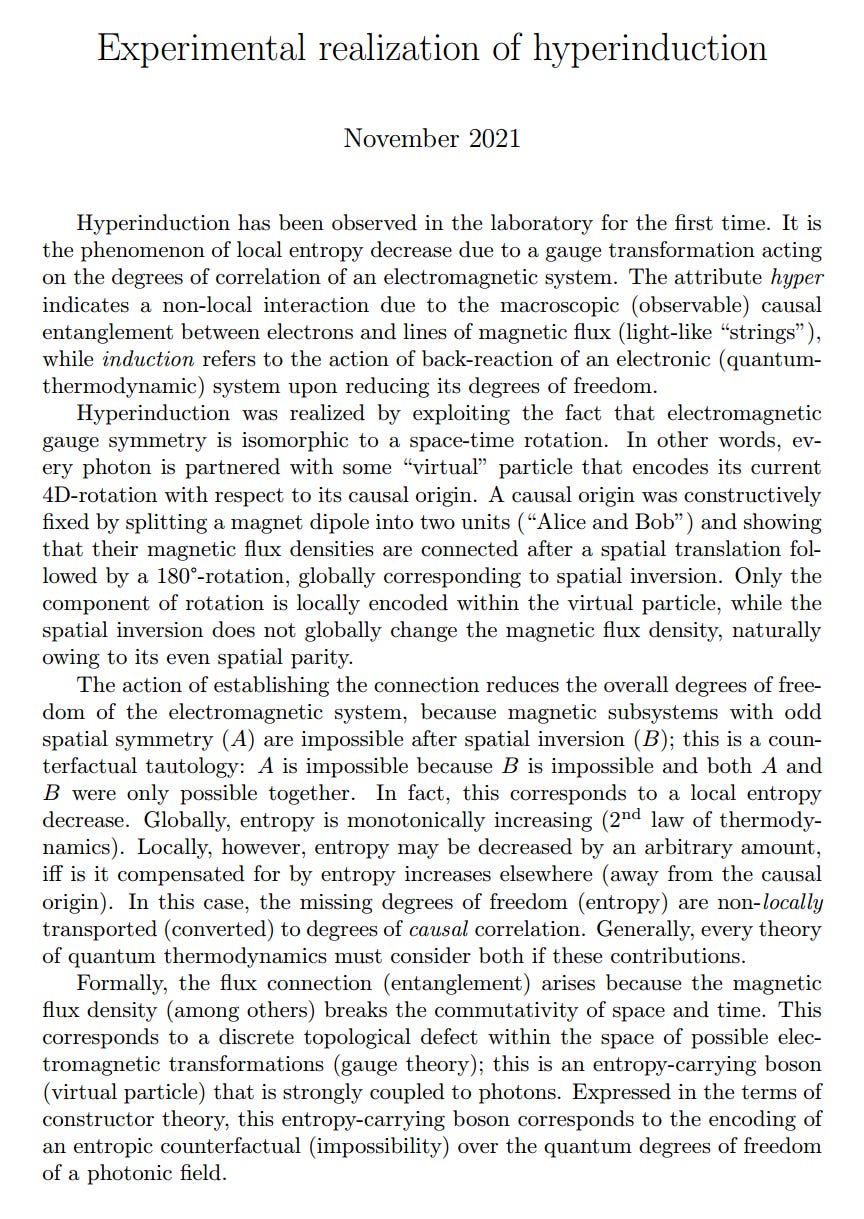Hi, I'm Paul
I’m really just a guy trying to understand the universe.
In 4th grade I’d read my kid’s lexicon front to back at bedtime, then ask my teacher when we’d finally talk about atoms and orbitals instead of trees and animals. Incidentally, around the same time, I had the vivid realization that the world may have “more dimensions” than we can perceive, only adding to my curiosity about the building blocks of reality.
A year later, I started playing with soft- and hardware: Programming BASIC, building electronics circuits, and browsing the web to discover more stuff. Searching for “electronics circuits”, can you imagine what happened when I first stumbled onto “free energy” circuits online?
Why were these crazy impossible stories even out there? I read everything I could find about TESLA, Hendershot, Coler, Moray, and other inventors. I started asking questions: Either someone is hiding this stuff from us, or it’s just straight-up made up bullshit.
Both scenarios seemed nuts, so the curiousity remained. By 2004, I was deep into high voltage electronics, building my own tesla coils. These were so damn cool that I wanted to tell others about them, so I started the online forum that grew into the largest one in Germany.
But none of this got me closer to understanding — let alone tapping — “free energy”. Honestly, that initial motivation wasn’t even something I’d say out loud. I’d even forget about it myself in the years to follow, until in 2013 my interest in that research was miraculously revived (after reading a particular paper).
🌀 Fast forward: I completed my masters thesis and in 2024 finished my engineering PhD in digital multi-channel signal analysis at the national metrology institute of Germany. Today, I don’t do research at work — I do it at home. I’m just a regular industrial software architect lead coding firmware at day and decoding the universe at night. I’m an autodidact with the obsession for “transcendentally integrative” science.
There’s just no university, institution or corporation in the “white world” providing the scope and bandwidth of what I’m really interested in. Over the last 12+ years I’ve been REALLY stubborn about my research branching into AI, electrodynamics, the quantum vacuum, and information theory.
🧩 Turns out I’m really good at connecting the dots.
I spent countless hours reading 2000+ papers, wrote 3000+ notes/drafts, and started unifying knowledge across many different subdomains of engineering, physics, and mathematics. I’ve established a massive library of primary and secondary literature, a highly customized personal knowledge management AI assistant, a reasonably well equipped home lab with some manufacturing and RF equipment, as well as my own simulation suites (e.g., MagnetiCalc).
💥 Then I discovered the principle of hyperinduction:
Needless to say, the “Hyperinduction” theory is clearly misformulated because it’s quite old; I didn’t have the language and horizon yet. Many insightful connections therein are invariantly valid, however.
This was well before AI started churning out slop geniuses left and right LOL
By virtue of my seemingly inexhaustible source of stubborn inquiry and motivation, I recently started posting on X and Substack — and I’m incredibly thankful for the opportunity to feed back my insights and opinions to y’all.
I’m only starting out, exploring what works on these platforms, and I have big plans. Can I count on you?
👉 If you’d like to follow me and my journey, please also restack or comment. It’ll help me connect to more people. Let’s join forces and fan out our knowledge. Thank you!
– Paul





Regarding the increase of entropy globally while entropy decreases locally in that paper that you shared with us, at first, I thought oh poor luck to the rest of the universe screeching by at increased entropy while a limited scope of its membership is enjoying a reduction of entropy. And then I stopped myself in mid tears and remembered that that's not the way it necessarily has to work out. Because I've done simulated circuits in which entropy increases in one area of the circuit while entropy decreases in other areas of the circuit and when they are magnetically coupled together the benefit is an overall increase of power.
no let me back up
it's the impedance that increases in certain areas of the circuit while it diminishes elsewhere and all the while current is reversing itself 180° making an overall diminishment of entropy across the entire circuit
now I don't know how physics views impedance. Does it view it as a diagnostic symptom of entropy? Because if that's so then I don't have to correct myself.